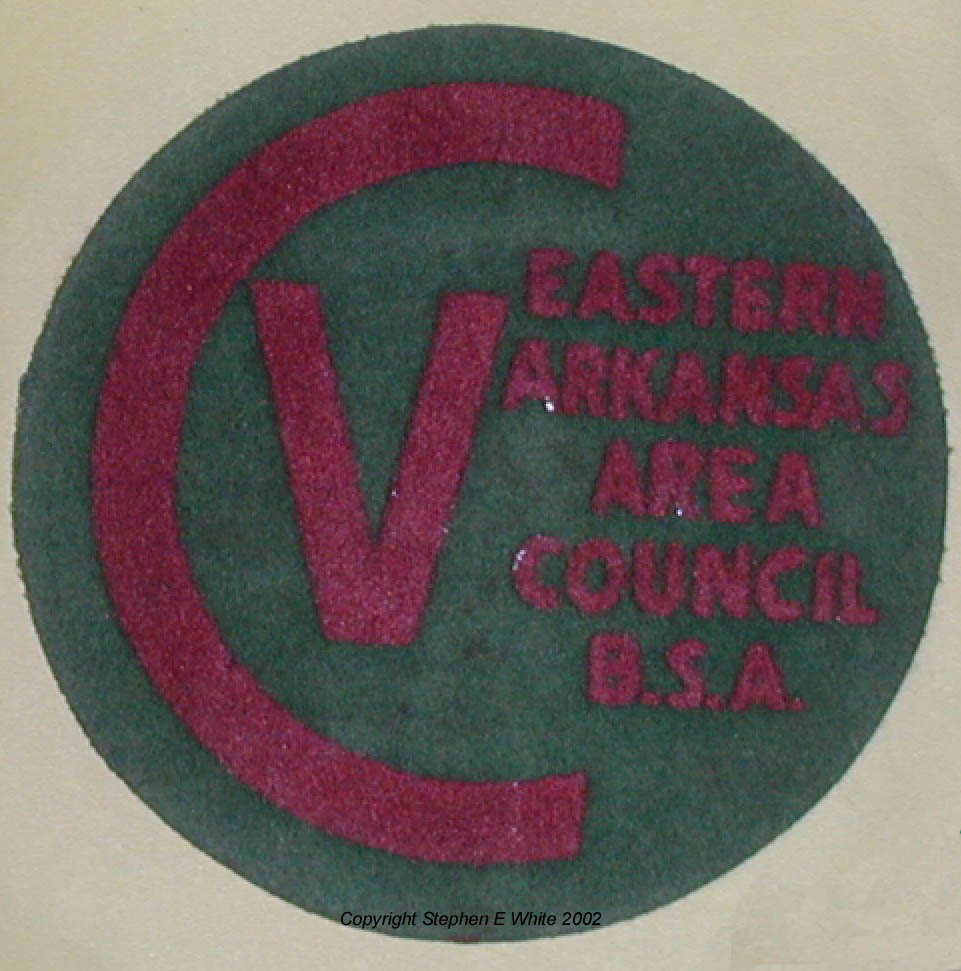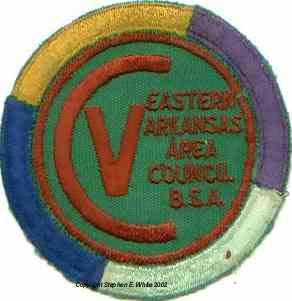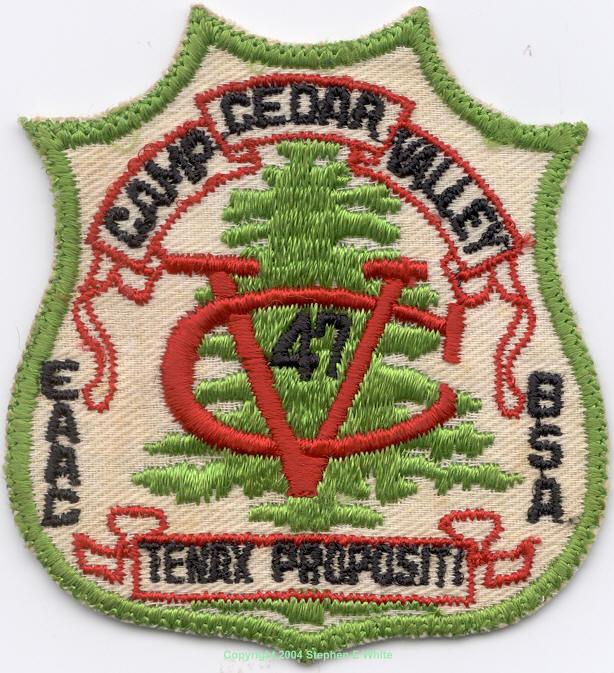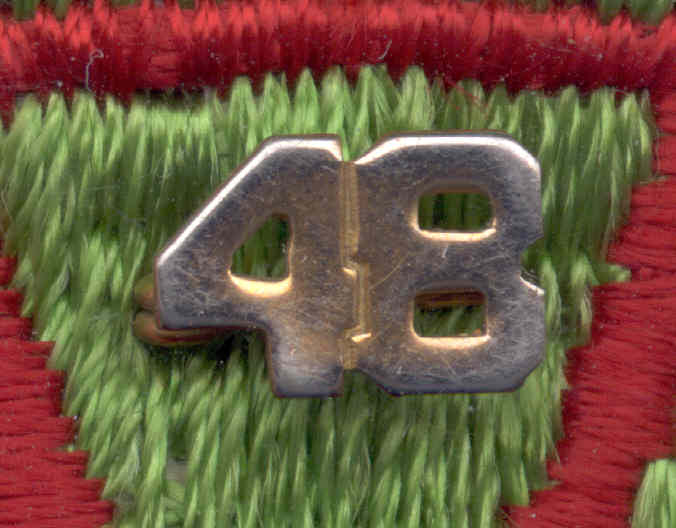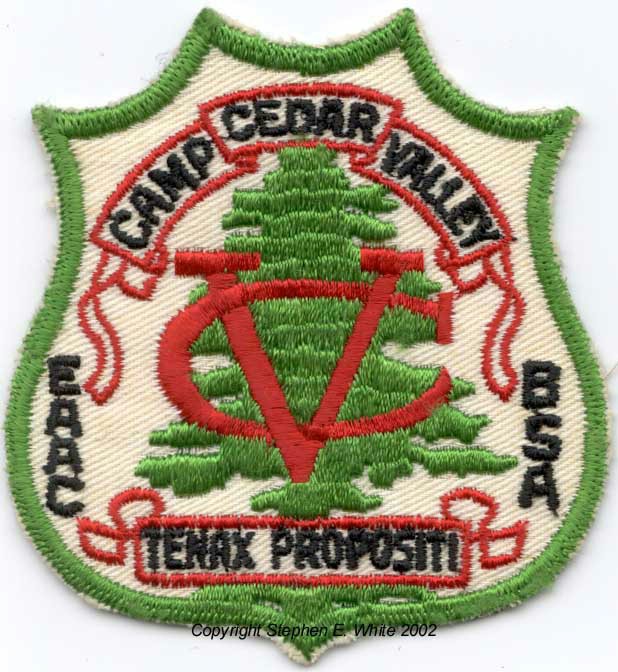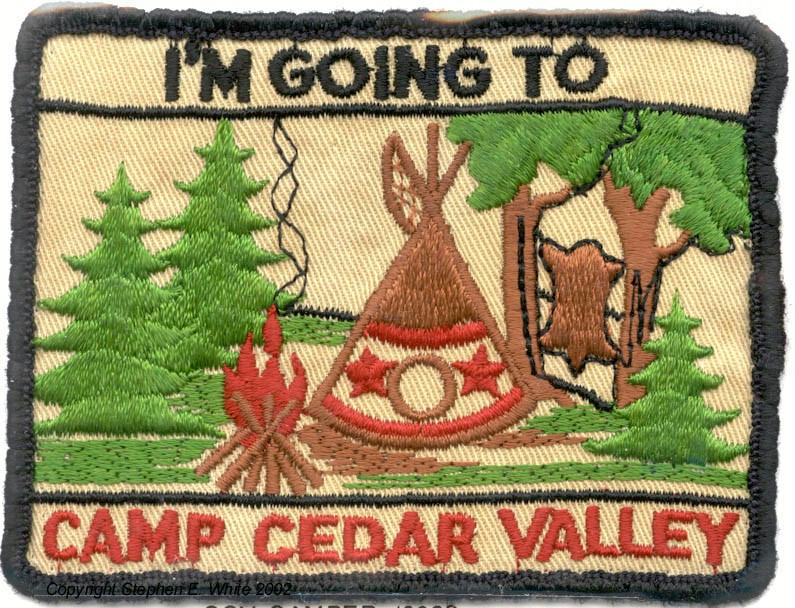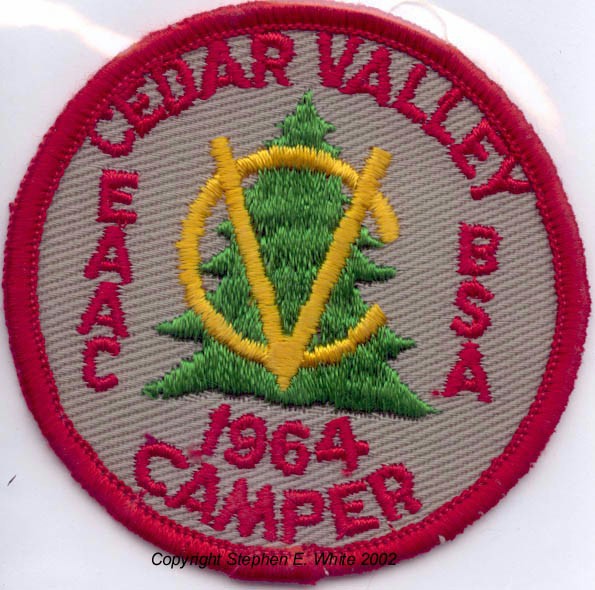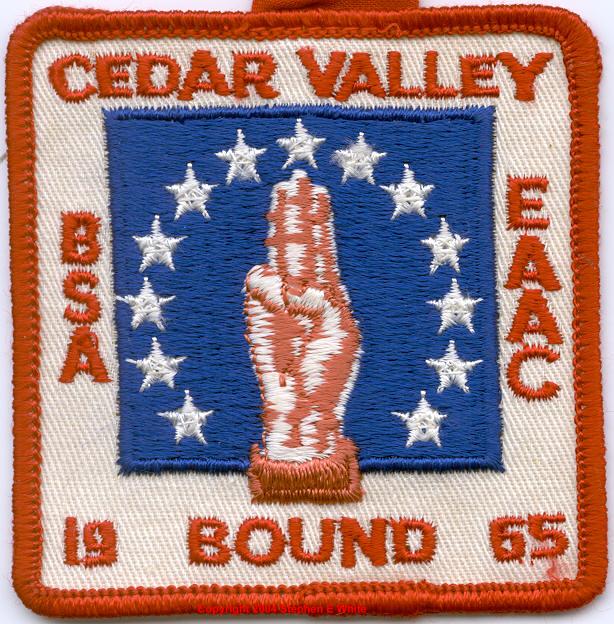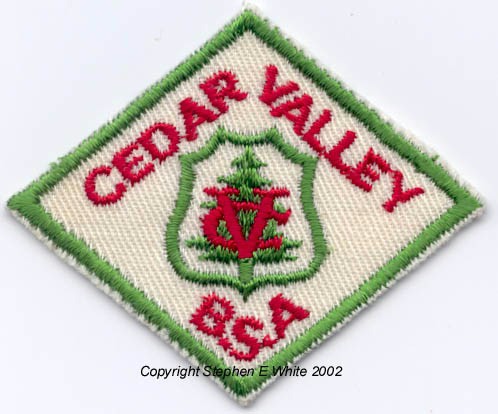Old Camp Cedar Valley
1942 to 1966
| EAAC Issues Main Index |
The camp served us from 1942 until the property was sold in 1966. For the first two years as our camp, the majority of scouts camped in tents other than the five cramped cabins. By 1944 we had begun to replace these with larger cabins to handle all troops. In it's prime, the camp used a patrol cabin system. Each cabin was rustic, made of local stone and had open, screen covered sides and bunked army cots. The dining hall initially used a wood fired water heater. Camp activities were regulated by a large church bell acquired from the old Twist Plantation in our council, near Earle. The bell was produced by the Charles S. Bell Company, of Hillsboro, Ohio, on July 18, 1918. (When the camp moved to Viola in 1968, the bell went with us, where it was installed in 1976, and rang for the first time for the US bicentennial celebration in July of that year.)
Swimming and canoeing took place on a natural beach of the South Fork river. The water was very cold as any old timer would remember! Camp fires took place at a natural bluff called "Council Bluff". A centerpiece of Council Bluffs, was a large Native American Tee-pee. A natural chapel area was located down the hill from the handicraft shelter in a wooded area area. As late as 1977, the old chapel area could still be located, a large cross still in place.
By 1966 much of the surrounding land had been developed. After the camp was sold a large portion of the land became part of the golf course for Cherokee Village. A private home now sits on Council Bluff, where the very friendly owner reports fairly frequent visits from men who just want to spend a few minutes in her yard to look from the bluff. The dining hall was used as a club house for some years, but as recently as the spring of 2001 it was being used for storage by Cherokee Village. The stone cabins were removed shortly after the camp was sold. Traces of the base for the hot water heater and a couple of the cabins can still be faintly seen. The handicraft pavilion, which was rebuilt very shortly before the camp closed, is now a picnic shelter in Cedar Valley Park and appears to have been rebuilt yet again. Much of the core property is now known as "Cedar Valley Park" in the town of Cherokee Village. The old dining hall and handicraft shelter are all that remain of the buildings however. Incidentially, the dining hall was rebuilt in early 1958 after lightening struck it and it burned to the ground.
| EAAC Issues Main Index |
Copyright © 2004-2010
EAAC
Historical Preservation Society
Rev 1 Jan 2010 sw

